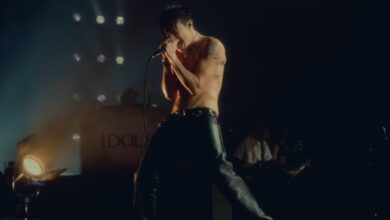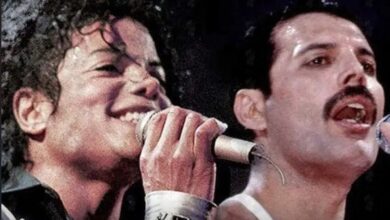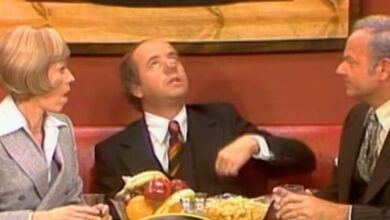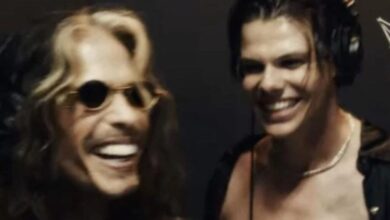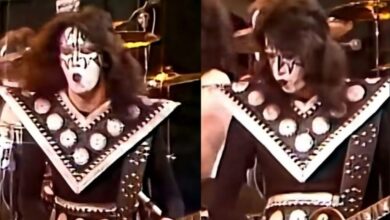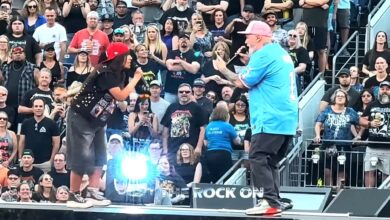Metallica Honors Children’s Hospital with “Sad But True” Live
Metallica’s highly anticipated return to San Francisco on October 15, 2025, brought a surge of excitement throughout the city long before the show even began. It wasn’t just another tour date. This was a charity-driven hometown celebration with layers of emotional value behind it. Fans descended upon the Chase Center not only to witness the world’s biggest metal band perform, but also to stand behind a powerful cause benefiting UCSF Benioff Children’s Hospitals. The evening carried a sense of unity and purpose, turning a musical event into something that reached beyond the walls of the arena and directly into the heart of the community. The notion that rock could help save lives added a deeper resonance to the energy pulsing everywhere.
While crowds gathered at the arena, Dreamfest offered a uniquely split setup across different venues. Inside the Chase Center, donors mingled in a gala-style reception before the show, complete with speeches and emotional tributes honoring patients and frontline caregivers. At the same time, just a short distance away, Benson Boone performed for a younger audience outdoors. The dual-stage format made the event feel like a city-wide festival rather than a standard benefit function. With such an unorthodox start, the anticipation for Metallica kept climbing. Guests could feel the shift coming as the lights dimmed, marking the true beginning of the celebration.
Metallica hit the stage with “Creeping Death,” instantly transforming the elegant atmosphere into the loud, electrifying world every fan had come to experience. James Hetfield, clearly energized by being back in his home territory, delivered his greeting with raw familiarity, telling the crowd they were here to “have some fun tonight.” The show instantly felt like a love letter to San Francisco. You could sense that this was more meaningful than a stop in a random city. The band played with the swagger of locals who had returned to their kingdom to unleash everything they had.
The night’s setlist showed intentional craft. Rather than building a marathon performance like the extended M72 tour sets, Metallica curated a compact and powerful run-through of some of their most beloved anthems. Major crowd-pleasers came one after another, each designed to spark mass adrenaline. From the percussive stomp of “Fuel” to the communal howl during “The Memory Remains,” every track served a purpose. This was a concert structured to maximize emotional highs for a crowd that deserved every second of it. Each piece worked like a gear in a machine built to unify everyone under the same roaring voice.
Then the moment came when the floor shook under the weight of what many came specifically to witness: “Sad But True.” Positioned as a turning point in the set, the song’s crushing down-tuned riff poured out of the speakers with the kind of force that reminds everyone why Metallica remains unmatched. The groove settled like a seismic pulse into the chests of tens of thousands of fans. Hetfield leaned into the grit of the vocals, pacing the stage like a general commanding an army. Trujillo’s bass lines made the venue tremble, and Hammett’s guitar leads cut through the air like a blade forged from decades of California metal heritage.
The performance of “Sad But True” hit differently not simply because of its heaviness, but because of the purpose behind it. The song’s darker themes turned into an outlet for the audience to release stress, fear, tension, and every emotion they carried into the building with them. At an event supporting children fighting for their lives, the music gave adults the rare opportunity to unload their own battles for a brief moment. It became a catharsis wrapped in pounding drums and snarling riffs. Metallica has always understood the emotional power of their music, and on this night, that understanding was crystal clear in every note.
In addition to the emotional dimension, the band’s relaxed confidence on their home turf elevated the show. Hetfield’s interactions with the crowd felt personal, like a local welcoming neighbors into his backyard. Kirk Hammett, San Francisco’s own guitar wizard, glided across the stage with a playful swagger. Rob Trujillo displayed his characteristic drive and fluid movement, feeding off the crowd’s roar. Lars Ulrich conducted the pacing from behind the kit, ensuring every lift and drop hit precisely where it needed to. Watching them play in the Bay Area always brings a certain familial warmth to the chaos.
Analyzing the structure of the performance reveals a deeper sense of storytelling in the set. After pulling fans into intensity through the opening selections, Metallica guided the night into an emotionally introspective zone—allowing “Sad But True” to land with maximum force. What followed shifted the mood upward again. Songs like “Wherever I May Roam” and “Nothing Else Matters” provided connection and uplift, with everyone singing shoulder-to-shoulder. Then the home stretch detonated into a final sequence of thrash icons that reignited the pit with all the speed and fire expected from this band of legends.
While the show stood proudly on its own merits, the Dreamfest infrastructure helped tie everything together with heart. The narrative woven through pre-show presentations gave the performance additional context, reminding everyone of the ultimate goal behind the music. Fans weren’t just buying a ticket—they were contributing to something larger than themselves. The evening celebrated the spirit of generosity while rewarding that generosity with unforgettable entertainment. That’s a rare balance to strike, but Metallica handled it with grace and grit simultaneously.
Dreamfest’s dual-format structure created an interesting generational fusion. Some fans arrived via the pop spectacle outside. Others came directly for Metallica’s decades-spanning dominance. But once the lights hit inside Chase Center, every style and every age group became one unified crowd banging their heads together. The diversity of the audience was proof of Metallica’s ability to transcend time, genre, and cultural boundaries. It was not just a heavy-metal event. It was a gathering of everyone who believed in music’s power to bring people together for something meaningful.
The ripple effect continued after the final encore. Fans swarmed social media with clips, personal reflections, and emotional thanks. Many talked about how seeing this performance reminded them why they fell in love with Metallica in the first place. Others expressed pride in their city for turning an annual tech-centered week into something grounded in social good. It was one of those rare concert nights that stayed alive long after the decibels faded, echoing through the digital world and through families who benefited from the fundraising efforts.
San Francisco media followed up with glowing praise, celebrating the band’s willingness to show up for their hometown not just as entertainers but as partners in an important cause. That local acknowledgment carries weight because Metallica built its earliest legend right there in the Bay. They have never turned their backs on the city that gave them their start, and nights like this reinforce how strong that bond remains. Fans see it. The city sees it. And the hospitals supported by the event feel it in the most real way possible.
The setlist for the night now lives online permanently, allowing fans to look back and remember exactly how the night was sculpted. Twelve songs, each carefully chosen, each delivered with spirit, precision, and emotional clarity. “Sad But True,” sitting firmly at the midpoint, stands as the gravitational core around which everything else orbited. Even in a night built entirely from classics, that one track stole the spotlight and defined the experience. It reminded everyone that Metallica are masters of crafting live shows that hit the mind and the body simultaneously.
The staging choices played their part as well. Instead of overwhelming the moment with oversized theatrics, the band relied on sleek lighting, thoughtful camera angles, and the natural dramatics of the music itself. “Sad But True” came to life through tight visual storytelling, focusing attention where it mattered most—on the band, the groove, and the crowd shouting every word like a prayer. It was proof that Metallica doesn’t need gimmicks or distractions. Their presence alone transforms a room.
When the houselights eventually rose, there was a lingering sense that the night had accomplished something profound. People walked out buzzing—not only from hearing some of the greatest songs in rock history, but from knowing their voices, energy, and ticket helped fund care for children who desperately need it. Metallica proved once again that music can ignite change. On that October night, “Sad But True” was more than a heavy-metal masterpiece. It was the emotional anchor of a night designed to heal, uplift, and unite thousands under one cause. That is the true legacy of the performance.
